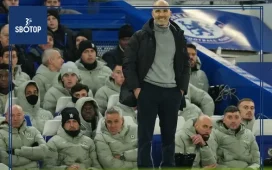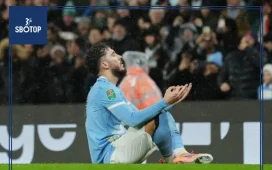While the football world remains captivated by headline-grabbing transfers and high-profile departures, Real Madrid has quietly executed a masterstroke behind the scenes. Beyond the glamour of acquiring global stars, the club is reaping substantial financial gains by strategically selling its young talents—without relinquishing full control over their futures.
This forward-thinking strategy showcases Real Madrid’s evolution into a club that not only chases short-term success but also prioritizes sustainability and long-term squad development. Under the leadership of Florentino Pérez and a meticulous technical staff, Los Blancos have developed a hybrid approach: part business acumen, part football foresight.
Behind the Spotlight: How Madrid Turned Youth into Assets
During the 2025 summer transfer window, Real Madrid secured deals for several high-potential players such as Franco Mastantuono, Dean Huijsen, Trent Alexander-Arnold, and notably, Alvaro Carreras from Benfica. Carreras’ case serves as a lesson deeply embedded in Madrid’s recent transfer philosophy.
Carreras was once a product of the club’s esteemed youth academy at Valdebebas, only to be let go and later repurchased for a hefty sum. That decision—letting him go prematurely—prompted a deep reevaluation of how the club handles the exits of its promising young prospects.
Now, each sale involving a youth player is executed with precision, accompanied by buy-back clauses or retained rights, allowing Madrid to maintain a tether to players who may flourish elsewhere.
Smarter Sales, Better Profits: €25 Million and Counting
According to Spanish outlet Sport, this refined model has already generated close to €25 million in revenue through the transfer of academy graduates and Castilla players. But what sets this apart from a regular youth exodus is the calculated inclusion of contract clauses that keep Real Madrid in the loop.
Players like Yusi, Lorenzo Aguado, Rafael Obrador, Jacobo Ramon, Alvaro Rodriguez, and Chema Andres have been sold under this model. Although they now wear different shirts, Madrid holds the contractual power to bring them back—should they evolve into players worthy of the Bernabéu.
This system provides a win-win situation. These young talents gain experience, regular minutes, and career progression, while Real Madrid eliminates the financial and performance risks associated with youth development. Yet crucially, they don’t lose access to future stars.
The precedent for this strategy was set in the summer of 2024 with the transfer of Nico Paz. Even after his departure from the first team, Madrid has continued to monitor his development closely. This proves that the system works—not only theoretically, but in practical, financial, and competitive terms.
Balancing Finance and Football Vision
What Real Madrid has achieved is a rare balance in modern football. They’re not just making millions off their academy; they’re also preserving the essence of club-building. It’s no longer just about trophies and shirt sales, but about crafting a legacy and planning for continuity.
The policy is now embedded deep in the club’s transfer DNA. Every outgoing transfer of a promising youngster includes detailed provisions—such as sell-on percentages, future purchase options, or first-refusal rights. These legal safety nets give the club agility and future leverage, while also demonstrating trust in their own scouting and development systems.
This holistic model is being hailed as one of the smartest youth strategies in European football—one that maintains a strong financial structure without sacrificing sporting ambition.
Eyes on the Future: Thiago Pitarch the Next in Line?
Among the names currently drawing attention at the academy is Thiago Pitarch. According to Marca, he could be the next in line for this youth transfer-with-control policy. If a deal for Pitarch materializes, it is expected to follow the same blueprint: a transfer fee now, but strings attached for the future.
This signals a consistent application of the model, proving that Real Madrid isn’t just experimenting—it’s executing a clear, sustainable philosophy.
The overarching goal? Maintain financial health while never closing the door on rising stars who could become tomorrow’s global icons.
Conclusion: A Blueprint Worth Following
Real Madrid’s youth transfer strategy is more than just good business—it’s strategic genius. The club has found a way to profit in the present while safeguarding the future, keeping one eye on short-term revenue and the other on long-term success.
This dual-pronged approach not only strengthens the club’s financial foundation but ensures that its footballing vision remains intact. By not severing ties with promising talents, Real Madrid preserves a pool of potential reinforcements—many of whom could one day return to the Santiago Bernabéu as finished products.
Other elite clubs may soon look to replicate this model. But for now, Real Madrid has taken the lead, proving once again that their dominance isn’t confined to the pitch. It extends all the way to the boardroom—where every decision is calculated, and every transfer is a step toward a stronger, smarter future.
ALSO READ :








